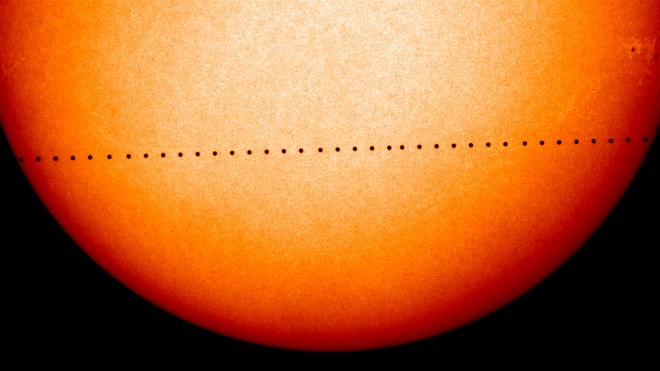Stargazers in the city are ready to celebrate a rare celestial event Monday.
Robert Pothier of the Sudbury Astronomy Club says the Transit of Mercury begins at 7 a.m., and lasts until the early afternoon. The event occurs in spring – within three days of May 9 – once every 33 years, although a similar event will take place in November 2019.
Pothier said May is the best time to catch a glimpse of the transit, since the weather is usually better for viewing than in November.
Members of the club, schools and anyone else who is interested are invited to Monday's viewing at Science North.
"We're going to be setting up solar telescopes so we can watch the planet cross the surface of the sun," Pothier said.
The special telescopes – he estimates there will be eight of them there Monday — allow the user to look at the sun without eye damage.
"If you looked at the sun with a normal telescope, without special filters, you'd burn your retina right out," he said. "So these allow you to actually look at the sun and look at sun spots and watch the planet Mercury cross the entire sun."
It takes Mercury seven hours to complete its journey across the surface of the sun, so there will be plenty of opportunity to get a look.
"I know Science North is going to have some of the schools there and the general public,” Pothier said. “It's open to everyone who wants to attend and there is no charge at all.
"So far, the weather looks good."
According to NASA, which is also providing coverage of the event, Mercury passes between Earth and the sun only about 13 times a century.
“Its last trek took place in 2006,” the space agency said on its website. “Due to its diminutive size, viewing this event safely requires a telescope or high-powered binoculars fitted with solar filters made of specially-coated glass or Mylar.”
Mercury will appear as a small black dot as it crosses the edge of the sun and into view at 7:12 a.m., NASA said. The planet will move across the face of the sun, reaching mid-point at around 10:47 a.m., and exiting the golden disk at 2:42 p.m.
“The entire 7.5-hour path across the sun will be visible across the Eastern United States – with magnification and proper solar filters – while those in the West can observe the transit in progress after sunrise,” NASA said.
For more information on the Sudbury event, visit the Sudbury Astronomy Club's website. Or to follow NASA's coverage, visit NASA's website.
